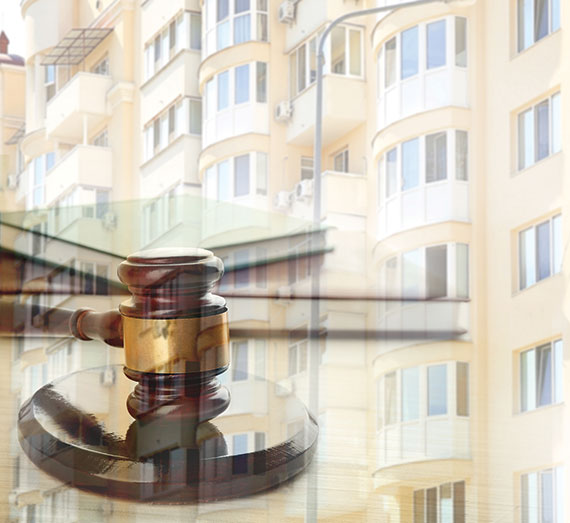The commercial property market can be a good way to generate return on investment
A significant trend of new bidders entering the auction market has been seen since Q4 2016, as people are becoming open to using the commercial property market as a way to generate a return on investment. There are few asset classes with minimal barriers to entry that an entrepreneurial investor can easily understand and relate to, hence commercial property is becoming a popular option.
Confidence and appetite in the regions, amplified by the Northern Powerhouse and Midlands Engine government initiatives, have helped to encourage this across the UK, opening up the market to those who would previously have avoided the high prices paid in the capital.
Most notably, however, recent government changes in legislation for the residential market are beginning to have an impact. Investors are reacting to two significant amendments – a substantial increase in stamp duty for second home ownership, and changes in tax allowances so that private investors are no longer able to offset their mortgage interest against their rental income. As a result of these changes, many investors are reviewing their investment strategy as they look for opportunity in other sectors to enhance their net return.
The sub-£2m commercial property market provides investors with a wide range of stock: traditional, yield-driven investments, where the investor is looking for long-term security, against a backdrop of secondary, mixed-use, multilet or vacant properties and small parcels of development land that have the opportunity to add value through asset management or planning gains.
The opportunity to add value by applying for a change of use to residential, subject to any consents, has been made considerably easier thanks to permitted development rights legislation. As a result, we are seeing more small investors, who had previously only bought and sold, start to embrace the technical nature of development, bringing it firmly into their business plan.
Wide variety
Prime examples of the wide variety of lots being sold through our auctions are assets in Ilford and Hornchurch. Both presented the market with opportunities at two very difference pricing levels, with the potential to enhance the value by changing the use from office to residential. The demand was very strong for both assets and the sale prices were respectively 116% and 77% above their reserve prices.
As an example of even further diversification, JCDecaux recently offered 12 former advertising hoarding sites for sale, with one particular site in Reading sold for £305,000 off a guide price of £95,000. The fringe city centre position of the site, combined with its development potential and additional benefits of Reading’s Crossrail station, are two factors that encouraged aggressive bidding from developers and entrepreneurs that are prepared to take planning risks for the promise of a more lucrative financial gain than they might expect to receive by purchasing a more traditional buy-to-let investment.
I would like to add some additional advice that new buyers may not have thought of, particularly if moving from the residential to the commercial sector. Certain commercial assets attract VAT, which is uncommon in the residential sector. Most commercial auctioneers will reference VAT in their sales particulars, stating whether it is payable or not, or at least directing investors to the legal documentation where they can find this information.
Interested parties will need to decide whether they want (or need) to set up a VAT registered company to purchase the property, which will allow them to reclaim the tax, or whether they may be able to treat the sale as a transfer of a going concern (TOGC) (where an opted property is sold with tenants in place or with the benefit of an existing lease, the vendor will normally be required to charge VAT at the standard rate).
However, if the prospective owner intends to continue to let the property to the tenants, then – subject to certain conditions – the transfer is a TOGC and no VAT is charged on the purchase price. Bidders should always take the appropriate professional advice as part of their due diligence to avoid the issue (and shock) of not realising that they may need to pay 20% VAT on top of the purchase price.
Rolling auctions comparative data residential
| Feb 2015 to Jan 2016 | Feb 2016 to Jan 2017 | Percentage change | |
| Lots offered | 26,878 | 27,940 | σ 4% |
| Lots sold | 20,886 | 21,158 | σ 1.3% |
| Percentage sold | 77.7% | 75.7% | τ 2.6% |
| Total raised | £3,181m | £3,238m | τ 1.8% |
Source: EIG property auctions
Rolling auctions comparative data commercial
| Feb 2015 to Jan 2016 | Feb 2016 to Jan 2017 | Percentage change | |
| Lots offered | 6,350 | 5,853 | τ 7.8% |
| Lots sold | 5,071 | 4,637 | τ 8.6% |
| Percentage sold | 79.9% | 79.2% | τ 0.9% |
| Total raised | £1,330m | £1,450m | σ 9% |
Source: EIG property auctions











